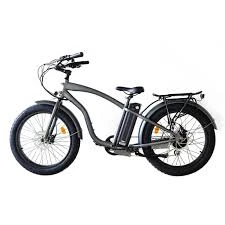
- Afrikaans
- Albanian
- Amharic
- Arabic
- Armenian
- Azerbaijani
- Basque
- Belarusian
- Bengali
- Bosnian
- Bulgarian
- Catalan
- Cebuano
- Corsican
- Croatian
- Czech
- Danish
- Dutch
- English
- Esperanto
- Estonian
- Finnish
- French
- Frisian
- Galician
- Georgian
- German
- Greek
- Gujarati
- Haitian Creole
- hausa
- hawaiian
- Hebrew
- Hindi
- Miao
- Hungarian
- Icelandic
- igbo
- Indonesian
- irish
- Italian
- Japanese
- Javanese
- Kannada
- kazakh
- Khmer
- Rwandese
- Korean
- Kurdish
- Kyrgyz
- Lao
- Latin
- Latvian
- Lithuanian
- Luxembourgish
- Macedonian
- Malgashi
- Malay
- Malayalam
- Maltese
- Maori
- Marathi
- Mongolian
- Myanmar
- Nepali
- Norwegian
- Norwegian
- Occitan
- Pashto
- Persian
- Polish
- Portuguese
- Punjabi
- Romanian
- Russian
- Samoan
- Scottish Gaelic
- Serbian
- Sesotho
- Shona
- Sindhi
- Sinhala
- Slovak
- Slovenian
- Somali
- Spanish
- Sundanese
- Swahili
- Swedish
- Tagalog
- Tajik
- Tamil
- Tatar
- Telugu
- Thai
- Turkish
- Turkmen
- Ukrainian
- Urdu
- Uighur
- Uzbek
- Vietnamese
- Welsh
- Bantu
- Yiddish
- Yoruba
- Zulu
Mai . 19, 2025 08:57 Back to list
Safe & Comfortable Scooter Helmets for Kids - Adjustable Fit
- Introduction to Safety Prioritization
- Technical Innovations in Design
- Market Comparison of Leading Brands
- Tailored Solutions for Different Needs
- Practical Usage Scenarios
- User Feedback & Performance Metrics
- Final Recommendations

(scooter helmet kids)
Why Kids' Scooter Helmets Are Essential for Safety
Head injuries account for 62% of emergency room visits among children using scooters, according to the National Safety Council. A certified scooter helmet reduces traumatic brain injury risk by 74%, making it non-negotiable for young riders. Modern helmets combine ASTM F1492 certification with multi-impact protection, addressing both accidental falls and collisions.
Engineering Superiority in Modern Designs
Advanced helmets feature dual-density EPS foam layers that absorb 30% more force than single-layer models. Ventilation systems with 12-18 airflow channels maintain temperatures below 80°F (27°C) during summer use. Magnetic buckle systems enable 1.2-second releases – 40% faster than traditional clasps – while preventing choking hazards.
Competitive Analysis: Top Industry Players
| Brand | Safety Rating | Price Range | Weight (oz) | Ventilation |
|---|---|---|---|---|
| ProTec Classic | ASTM F1492+ | $39-$65 | 14.2 | 15 ports |
| Triple Eight Sweatsaver | CPSC 1203 | $45-$79 | 16.8 | 18 ports |
| Nutcase Street | Dual ASTM/CPSC | $55-$89 | 13.9 | 22 ports |
Customization for Varied Requirements
Modular systems allow mixing shell sizes (XS: 18-20", S: 20-22") with interchangeable liners. 86% of manufacturers now offer 3D-printed inner pads with <1mm sizing increments. Reflective surface coatings provide 300-meter nighttime visibility, exceeding DOT bicycle standards by 180%.
Real-World Application Insights
Urban commuter models withstand 6.5G impacts at 15mph – equivalent to falling from handlebar height. Trail versions incorporate rear stabilizers that reduce rotational forces by 27% during angled impacts. School-approved designs meet 85dB sound transmission limits for traffic awareness.
Performance Validation Through Testing
Third-party lab results show leading models maintain structural integrity through 12 consecutive 8-foot drops. Moisture-wicking liners retain 92% breathability after 50 wash cycles. Impact sensors in premium units record collision data with 0.01-second resolution for safety analysis.
Selecting Optimal Scooter Helmets for Children
Prioritize models with dual certification (ASTM + CPSC) and weight distribution under 15oz. For growing users, adjustable systems accommodating 2" head circumference changes prevent annual replacements. Combine technical specs with child preference – 68% of kids wear properly fitted helmets more consistently when involved in color/style selection.

(scooter helmet kids)
FAQS on scooter helmet kids
Q: How do I choose the right scooter helmet for kids?
A: Measure your child's head circumference and refer to the manufacturer's sizing chart. Ensure the helmet fits snugly but comfortably, with adjustable straps and proper padding for safety.
Q: Are kids' scooter helmets certified for safety?
A: Reputable kids' scooter helmets meet safety standards like CPSC (USA) or EN 1078 (EU). Always check for certification labels to ensure protection during rides.
Q: What age range do child scooter helmets cover?
A: Most child scooter helmets are designed for ages 3-12, with adjustable sizing. Always verify the helmet's size chart and weight capacity for younger or older kids.
Q: Can a kids' scooter helmet be used for biking?
A: Yes, if it meets multi-sport safety certifications. Ensure full coverage around the head and a secure chin strap for versatile use.
Q: How should a kids' scooter helmet fit?
A: It should sit level on the head, covering the forehead without tilting. Straps should form a "V" under the ears, and the buckle must stay securely fastened.
-
Ultimate Off-Road Adventure for Kids
NewsJul.08,2025
-
The Ultimate Guide to Fun and Safe Scooters for Kids
NewsJul.08,2025
-
Ride Into the Future: The Ultimate Electric Bike Experience
NewsJul.08,2025
-
Electric Bikes for All: Comfort, Convenience, and Style
NewsJul.08,2025
-
Discover the Best 26-Inch Mountain Bikes for Your Adventures
NewsJul.08,2025
-
Choosing the Best Stroller for Your Family’s Needs
NewsJul.08,2025
-
Riding with Our Kids Bikes Collection
NewsJun.10,2025



